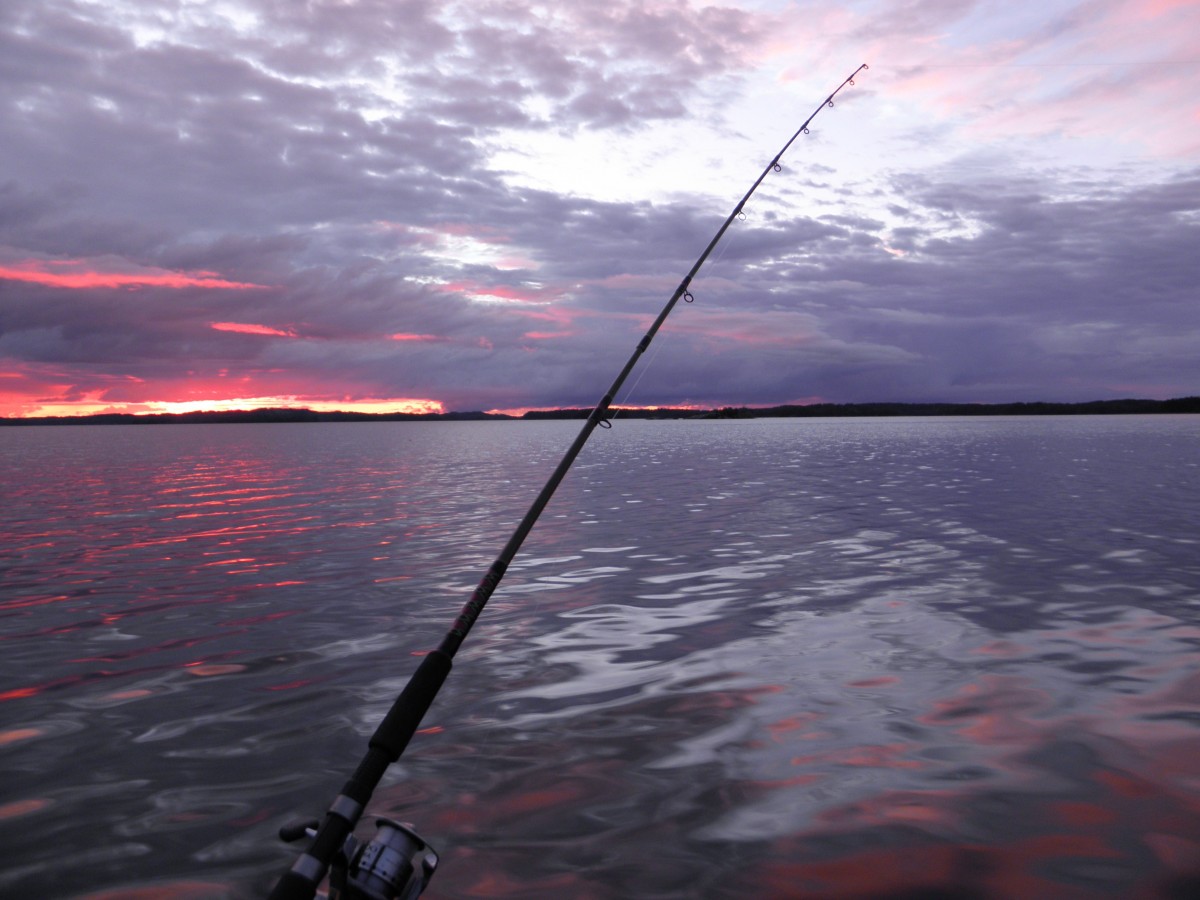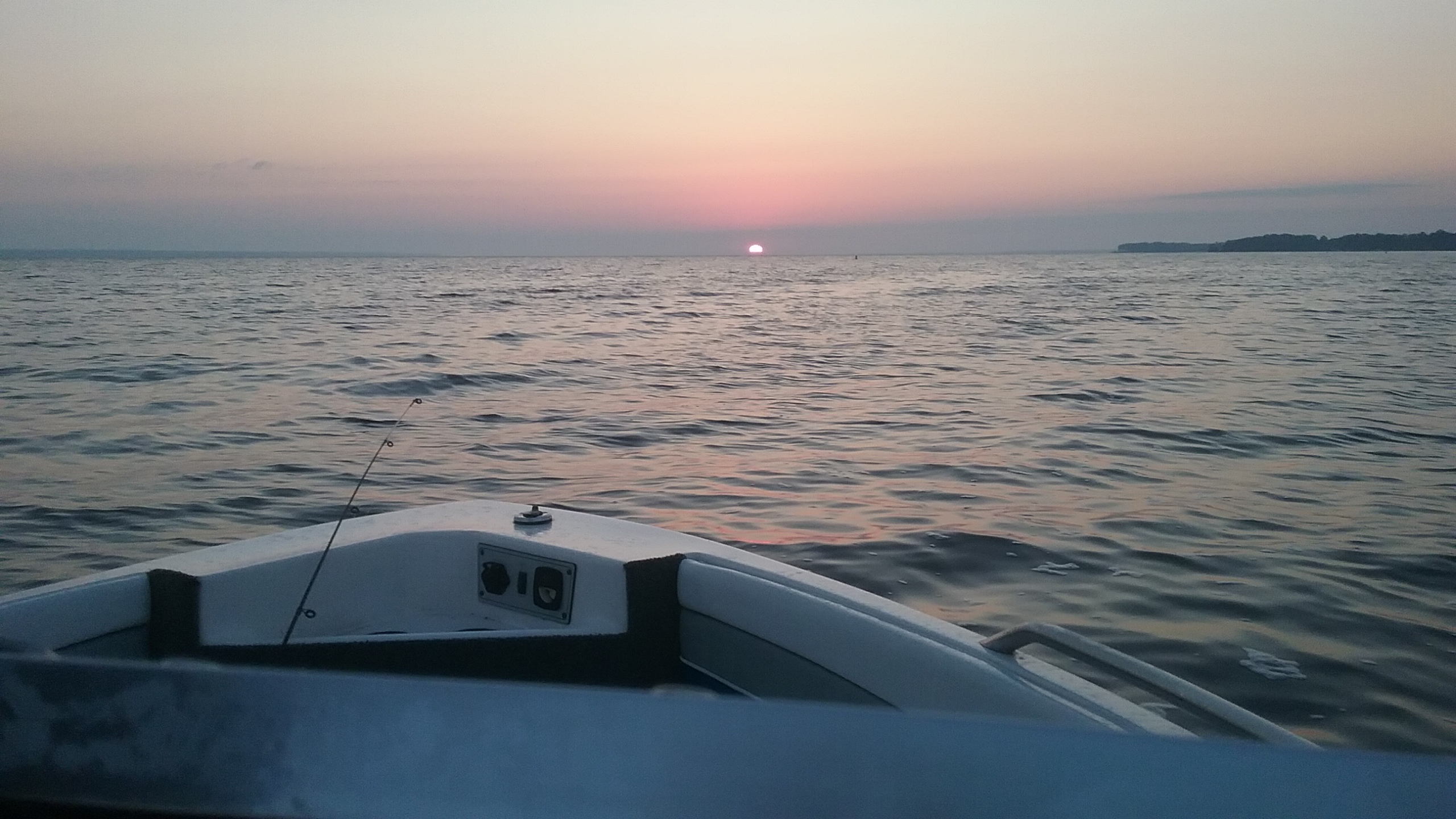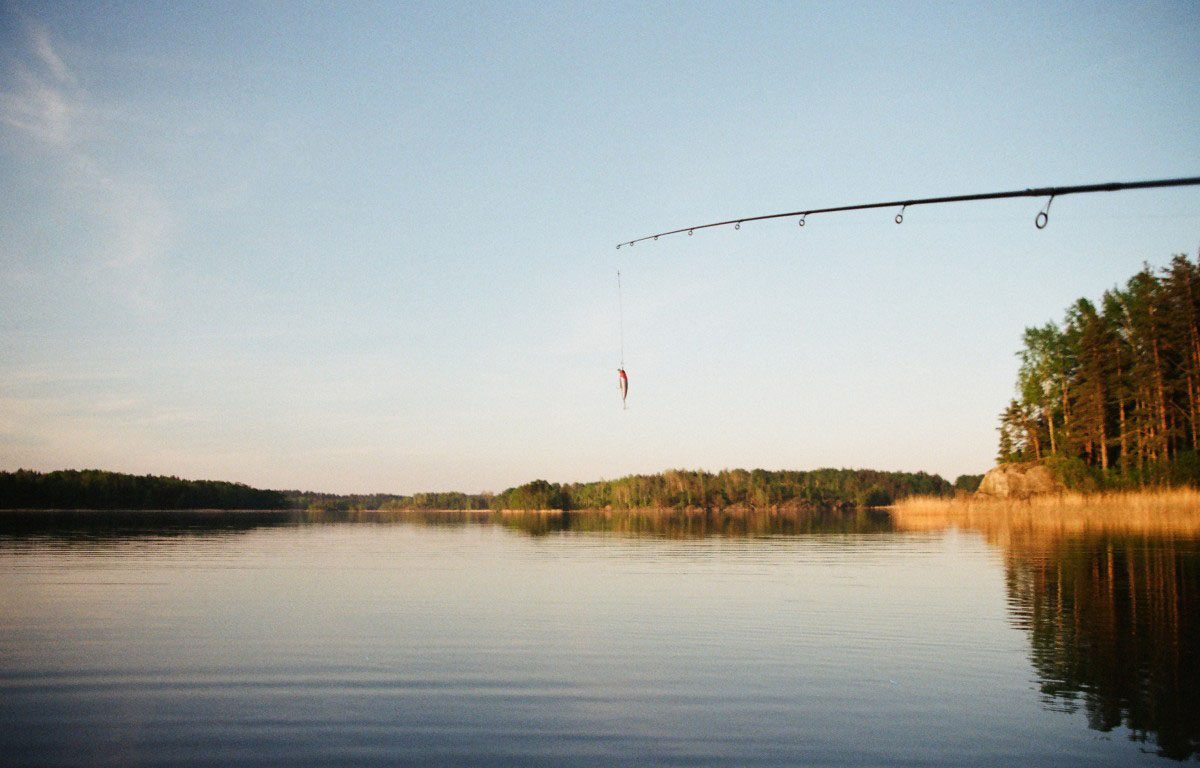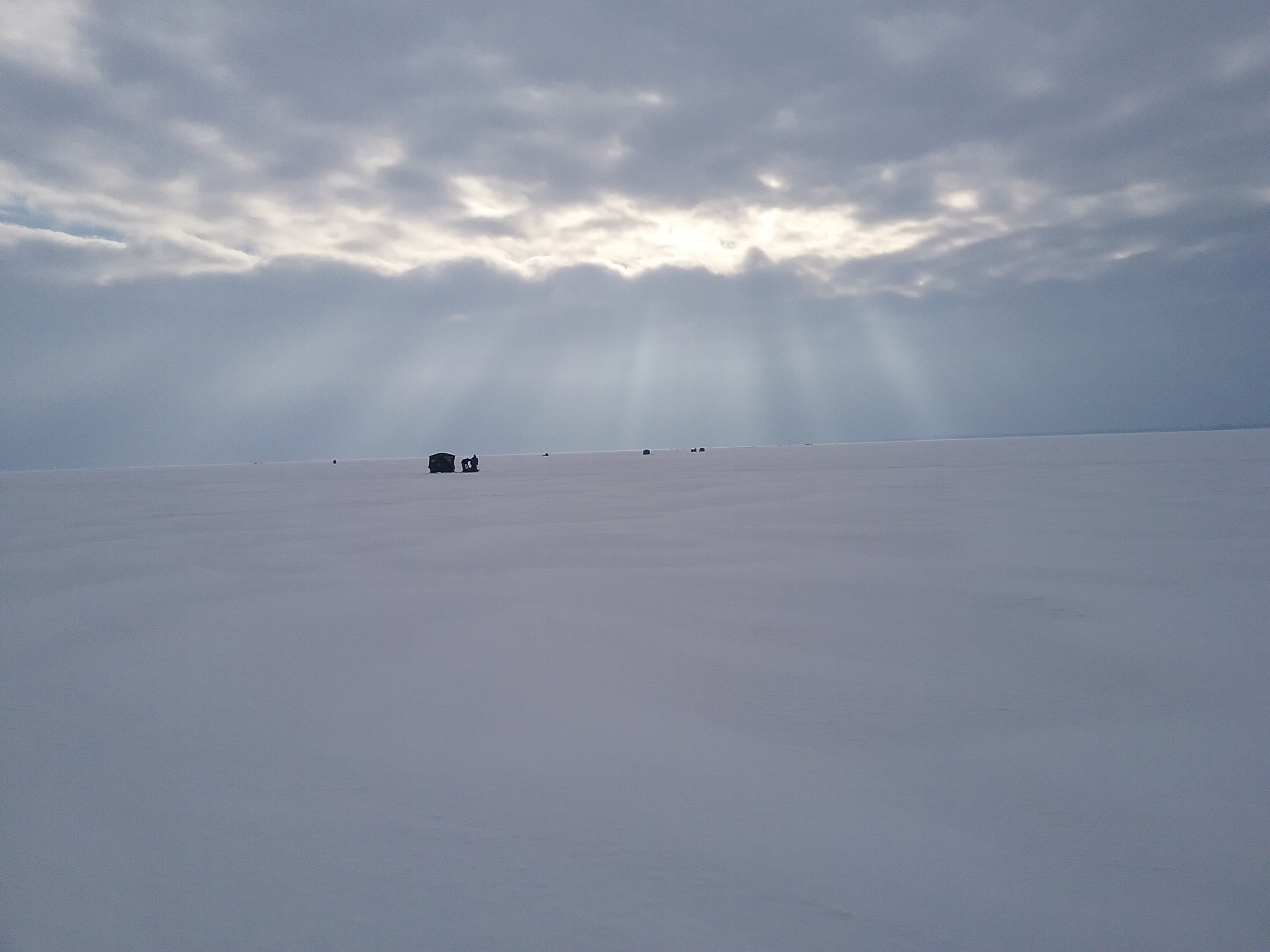
Spring
Spring is the season when the majority of the fish species in Oneida Lake reproduce. Fish such as Yellow Perch, Bullheads, Bluegills, and Crappies spawn this time of the year and that makes them a little easier to catch. All of these fish will spawn in shallow water.
Yellow perch will move onto weedy flats and deeper creeks. They can be taken with small jigs tipped with a piece of worm or a small minnow, or simply by using a hook and minnow rig with a weight at the bottom. A popular technique is to drift a minnow rig along the edge of the weeds until you locate a school of perch. Then mark that spot with a buoy, or nowadays folks use a GPS to mark the location. Then move back up the lake and keep drifting over that same area, or you can simply anchor your boat. If the fish move away then continue to drift along the weed line until you locate them again.
Bullheads are often caught from shore in the spring. A popular technique is to use a worm and sinker rig. Cast the rig out from the shore and prop the pole up with a stick. The line should remain tight so when a bullhead hits you can see the strike. Leeches also work well since they are heartier than worms. Bullheads may run up some of the deeper creeks and they can be caught in the creeks on the same worm/leech rig. They can also be caught on tiny bucktail jigs pulled under a small float (bobber). Many anglers fish for bullheads at night , but they can also be caught during the daylight hours.
Crappies and Bluegills are normally found in shallow weedy areas. This time of year they are also found in marinas and boat slips. Common bait for crappies and bluegills is often tiny jigs tipped with a plastic bait, or a minnow rig with small minnows. These fish will also move into some of the deeper creeks in the spring, especially the crappies.
Walleye season opens later in the spring , after they have finished spawning. The opening weekend is always the first Saturday in May. This time of the year walleyes tend to be in shallower areas of the lake near shoals and shallower drop offs. They will also tend to be bottom oriented. Walleyes can be caught casting stick baits in the shallows early morning and late evening, especially when there is a decent wind. The waves will rile up the bottom which will bring the bait in and the walleyes will follow. Walleyes can be caught jigging a bucktail jig tipped with a piece of worm too, drifting or slow trolling a worm harness, or slow trolling stick baits.

Photo submitted by Tom Bailey
Summer
This time of the year the baitfish are starting to grow and some of the fishing techniques change. The summer brings about the opening of bass season. Largemouth bass can be caught in the shallow weedy areas by using top water baits, rubber worm rigs, and spinnerbaits.
Smallmouth bass inhabit deeper and less weedy waters. They are often caught with tube jigs and deep diving crank baits casted around rocky shoals. At times smallmouth can be found chasing schools of bait. On calm days you can sometimes see the smallmouth chasing baitfish as they boil up to the surface. Casting stick baits or small spoons, like Kastmasters, into and around those bait pods can work well.
As the water gets warmer and the baitfish grow, the walleye fishing techniques change. Some walleyes can still be caught in the shallower waters along weed beds with jigs and stick baits. However, a fair amount walleyes tend to move to deeper sections of the lake. Even though the walleyes are in the deeper areas they tend to be a little higher in the water column since that is where the bait is, not bottom oriented as they once were in the spring.
Some common techniques this time of year are trolling stick baits or spoons with downriggers and/or leadcore line. Also trolling deep diving crank baits off of inline planer boards is becoming very popular.

Fall
Fishing kicks back into high gear during the autumn months. The fish feed heavily in preparation for winter.
Smallmouth bass are on the prowl for baitfish around the shoals. Stick baits and deep diving crank baits are the lures of choice.
The perch fishing can be excellent. The techniques are the same as in the spring.
Walleyes occupy various depths in the fall. However, casting stick baits from shore or wading near shore is the most popular technique this time of year. The walleyes move near shore in the evening to feed on bait fish. They can also be found near creeks mouths where the bait tend to congregate.
Walleyes can normally be caught from shore right up until the lake freezes. Don’t rule out the deep water bite though. Walleyes will still occupy the deeper sections of the lake and can also be caught trolling deep right up until the lake freezes.

Photo submitted by Tom Bailey
Winter
Panfishing is back into full swing. Crappies and Bluegills can be caught in the weedy bays using the same springtime techniques. Common bait for Crappies and Bluegills is often tiny jigs tipped with a plastic bait or spikes. The fishing tends to be the best when the lake first freezes and towards the end of the ice fishing season nearing spring.
Yellow perch can be found near drop-offs or on big flats. They can be caught with tip ups and tip downs or using small spoons or jigging Rapalas tipped with a small minnow. Another technique is fishing with small ice jigs tipped with spikes. The perch fishing heats up as you get closer to spring, near the end of the ice fishing season.
Walleyes tend to be found on the drop-offs most of the winter. Some popular techniques include using jigging Rapalas or jigging spoons tipped with a half of a minnow. Just like with the Yellow Perch, Crappies, and Bluegills, the winter walleye fishing is at its best early in the ice season and towards the end of the ice fishing season nearing spring.
Always check the ice before you go out on it. Use an ice auger, ice pick, spud bar or a cordless drill to make holes. New, clear, bluish-black ice is stronger than ice that is white or bubble-filled. The thickness guidelines listed below from several organizations are for new, clear ice. *These guidelines must be doubled for white ice. Note: This is just a guide, please use your best judgement. Read More About Ice Safety

